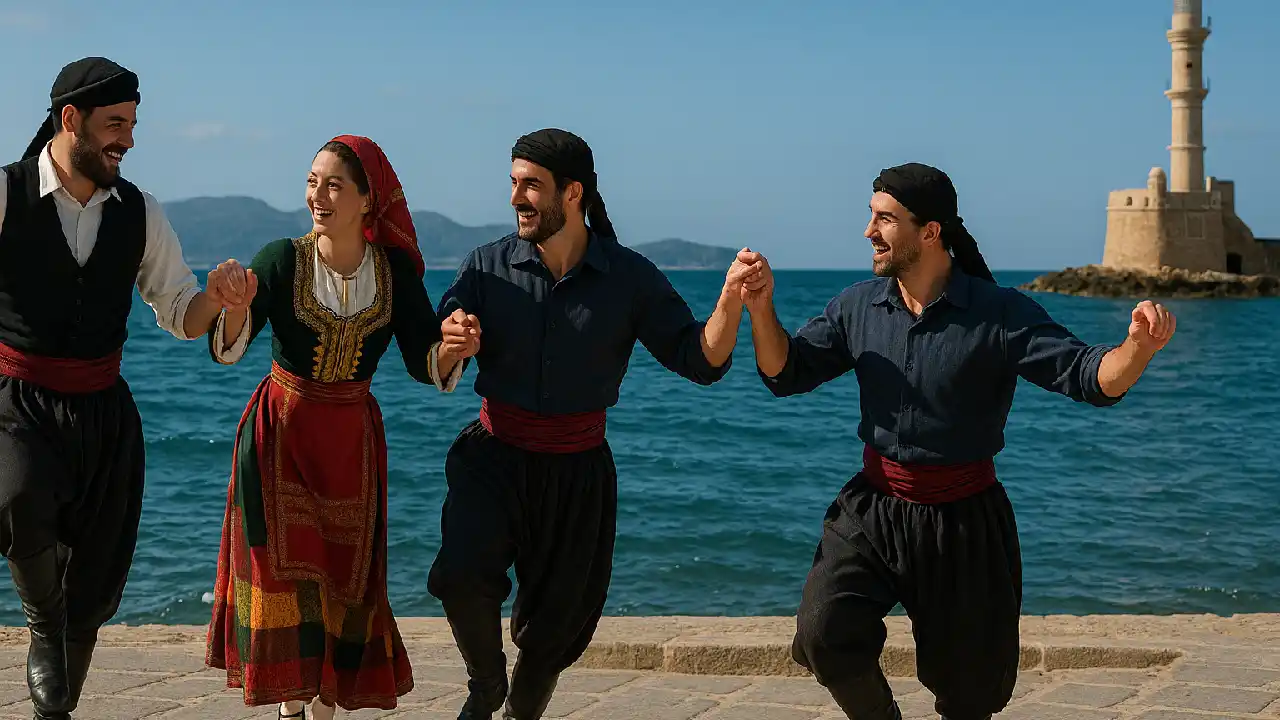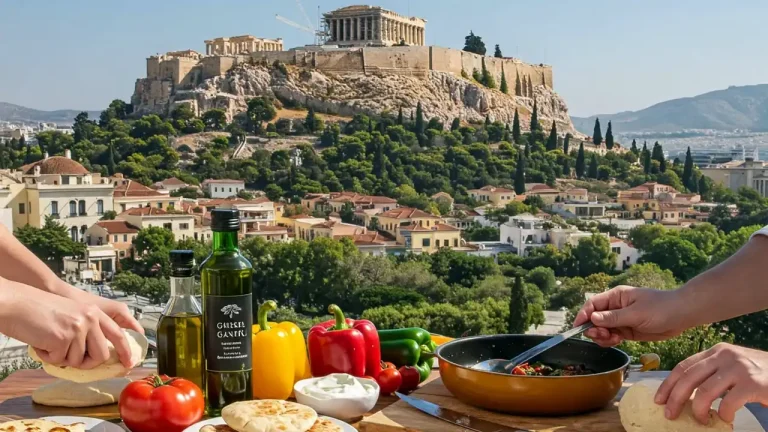Greek Dance: A Living Heritage of Rhythm and Culture
Greek dance is more than just an artistic expression—it’s a heartbeat of culture, a storytelling medium, and a timeless celebration of Greek identity. From spirited village festivals to elegant stage performances, Greek dance transcends generations and geography. It unites communities, preserves heritage, and continues to evolve with the times. In this article, we’ll dive deep into the multifaceted world of Greek dance, exploring its regional flavors, historical roots, and contemporary presence in ballet and belly dance.
The Legacy of Greece Traditional Dance
Greece traditional dance is one of the oldest forms of folk expression in Europe. Each region of Greece boasts its own unique movements, music, and purpose. Some dances are celebratory, while others are religious or martial in origin.
These dances often reflect ancient pagan rituals, Byzantine influences, and Ottoman-era adaptations. Villages across the country have preserved these traditional forms, performing them at weddings, Easter feasts, and national holidays. The dances often occur in a circular formation—symbolizing unity, eternity, and collective strength.
Dances of Northern Greece
Northern Greece features lively, robust dances such as the Leventikos, which incorporates strong, stomping movements. The Macedonian dances, for instance, often include slow, processional styles with emphasis on group coordination rather than flashy solo performances.
The Island Style: Aegean and Cycladic Dances
On the islands, dances are lighter and more graceful. The Ballos, common in the Cyclades and Dodecanese, includes romantic pairs spinning and weaving around one another. It mirrors the rhythm of the sea and the calm, poetic lifestyle of islanders.
Thessaly and Central Greece
Here, traditional dances such as the Kalamatianos and Syrtos dominate local celebrations. These are smooth and flowing, typically performed by groups in open circles. The Kalamatianos, especially, is often taught to Greek schoolchildren as a patriotic dance.
Cretan Dance: The Warrior’s Elegance
Cretan dance holds a special place in Greek dance culture. Known for its intensity and pride, dances from Crete such as Pentozali and Maleviziotis are deeply connected to the island’s revolutionary past. These dances were often performed by freedom fighters and have a fast tempo, with high jumps and sharp movements that demand strength and stamina.
Cretans also dance in a formation that radiates leadership. The front dancer improvises, often drawing on the spirit of the moment or the story in the lyrics. Watching a Cretan dance is like witnessing a folk opera in motion.
The Cultural Significance of Cretan Dance
Cretan dances are deeply woven into rituals of hospitality, weddings, and village festivals. They symbolize both communal resilience and individual valor. Dancers often wear traditional attire, with men in vraka trousers and women in vividly embroidered dresses.
Greek Ballet: Where Tradition Meets Sophistication
While Greece is most known for folk dances, the evolution of Greek ballet reflects the country’s engagement with global art forms. Greek ballet blends classical ballet techniques with Greek mythology, costume design, and musical traditions.
Ballet in Greece: A Contemporary Narrative
Modern ballet in Greece gained traction during the 20th century, with institutions like the Greek National Opera Ballet and private academies offering world-class performances. Productions often reinterpret myths such as Medea, Antigone, or Orpheus and Eurydice, using the expressive language of ballet to retell ancient tales.
Greek Ballet Schools and Training
Greek ballet institutions have grown in prestige, producing dancers who perform both locally and abroad. Training combines Western classical disciplines with storytelling elements from traditional Greek theater and music, giving Greek ballet a distinct emotional depth.
Belly Dance in Greece: A Fusion of East and West
Belly dance Greece isn’t indigenous but has found a vibrant home in urban centers like Athens and Thessaloniki. Rooted in Middle Eastern traditions, belly dancing was brought to Greece during the Ottoman occupation and became part of rebetiko music culture.
From Rebetiko Taverns to Modern Stages
In the early 20th century, belly dancing was performed in smoky underground taverns. Today, it is embraced by dance schools and included in performance festivals. Many dancers incorporate Greek music, particularly tsifteteli, a sensual rhythm well-suited for the fluid hip and torso movements of belly dance.
Contemporary Belly Dance Scene in Greece
Greek dancers and instructors often blend belly dance with elements of flamenco, tribal fusion, and Greek folk, creating hybrid performances. This evolution highlights how adaptable dance is as a cultural expression and a form of empowerment.
The Instruments Behind Greek Dance
No Greek dance is complete without its music. Traditional instruments like the lyra, laouto, and bouzouki provide the driving force behind many dances. Rhythms range from slow 5/8 to complex 9/8 patterns, making each dance a nuanced experience.
Costumes and Symbolism in Greek Dance
Clothing in Greek dance isn’t just decorative—it tells a story. Embroidery patterns, color choices, and fabric types denote region, marital status, and even economic class. These outfits enhance the visual impact of performances and keep cultural memory alive.
Greek Dance Today: From Villages to the Global Stage
Today, Greek dance is alive and well—not just in Greece, but globally. Diaspora communities in the U.S., Australia, and Canada maintain dance troupes, teach traditional steps, and perform at cultural festivals. Digital platforms have also helped spread the love for Greek dance worldwide.
Why Greek Dance Matters
Greek dance is more than a relic of the past—it’s a living, breathing tradition. Whether you’re watching a Pentozali at a wedding, enjoying ballet in Athens, or learning tsifteteli at a modern studio, each step connects you to centuries of resilience, joy, and artistic depth.
FAQs
What is the most popular Greek dance?
The Kalamatianos is arguably the most well-known Greek dance, often performed at weddings and national celebrations.
Is Greek ballet the same as classical ballet?
Not exactly. Greek ballet uses classical techniques but often incorporates mythological themes and Mediterranean aesthetics.
What music is used in Greek dance?
Traditional instruments such as the bouzouki, lyra, and clarinet are commonly used, depending on the region.
Can tourists participate in Greek dance?
Absolutely! Many cultural festivals and dance schools in Greece offer beginner classes and workshops.
What is the meaning of the Cretan Pentozali dance?
The Pentozali is a fast-paced war dance that symbolizes bravery, resistance, and Cretan independence.
Is belly dancing popular in Greece?
Yes, especially in urban areas. Belly dancing has become a popular performance and fitness practice, often fused with Greek rhythms.
Conclusion
Greek dance is an exquisite tapestry of history, movement, and cultural pride. From the mountainous beats of Crete to the expressive forms of Greek ballet and belly dance, it invites everyone to move, feel, and connect. The story of Greece can be felt in every twirl, step, and drumbeat.
Outbound Links:








